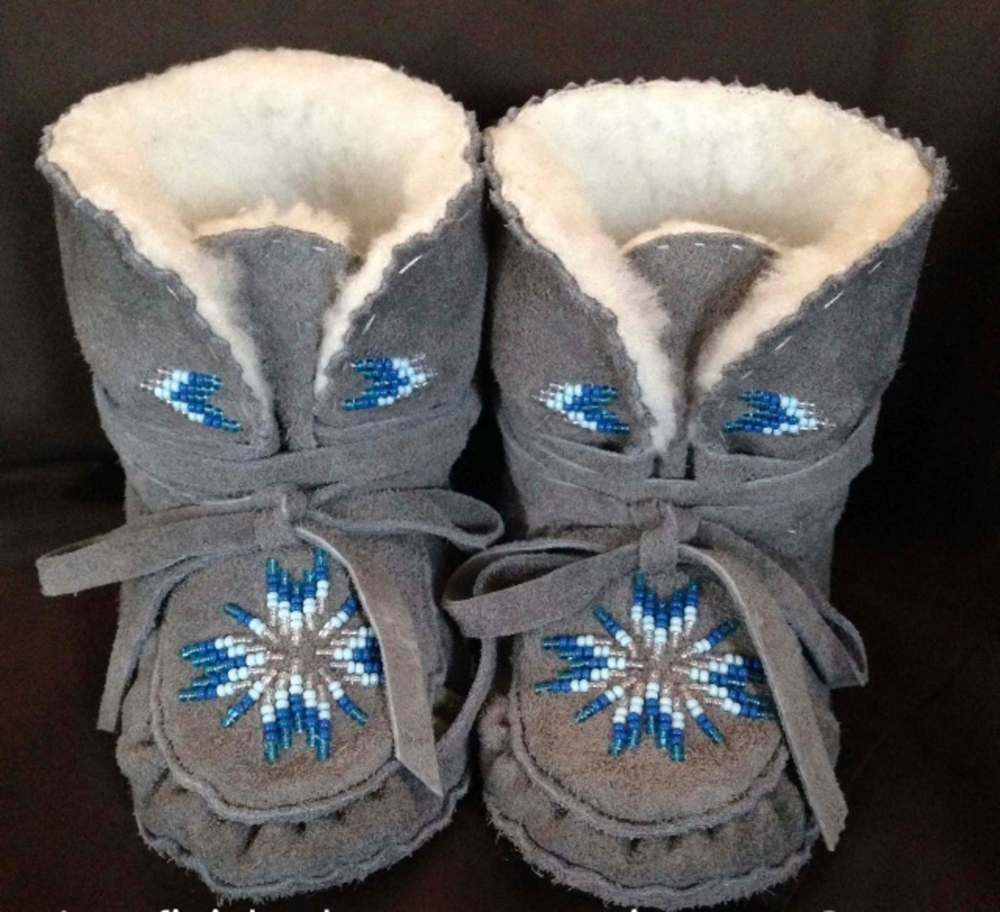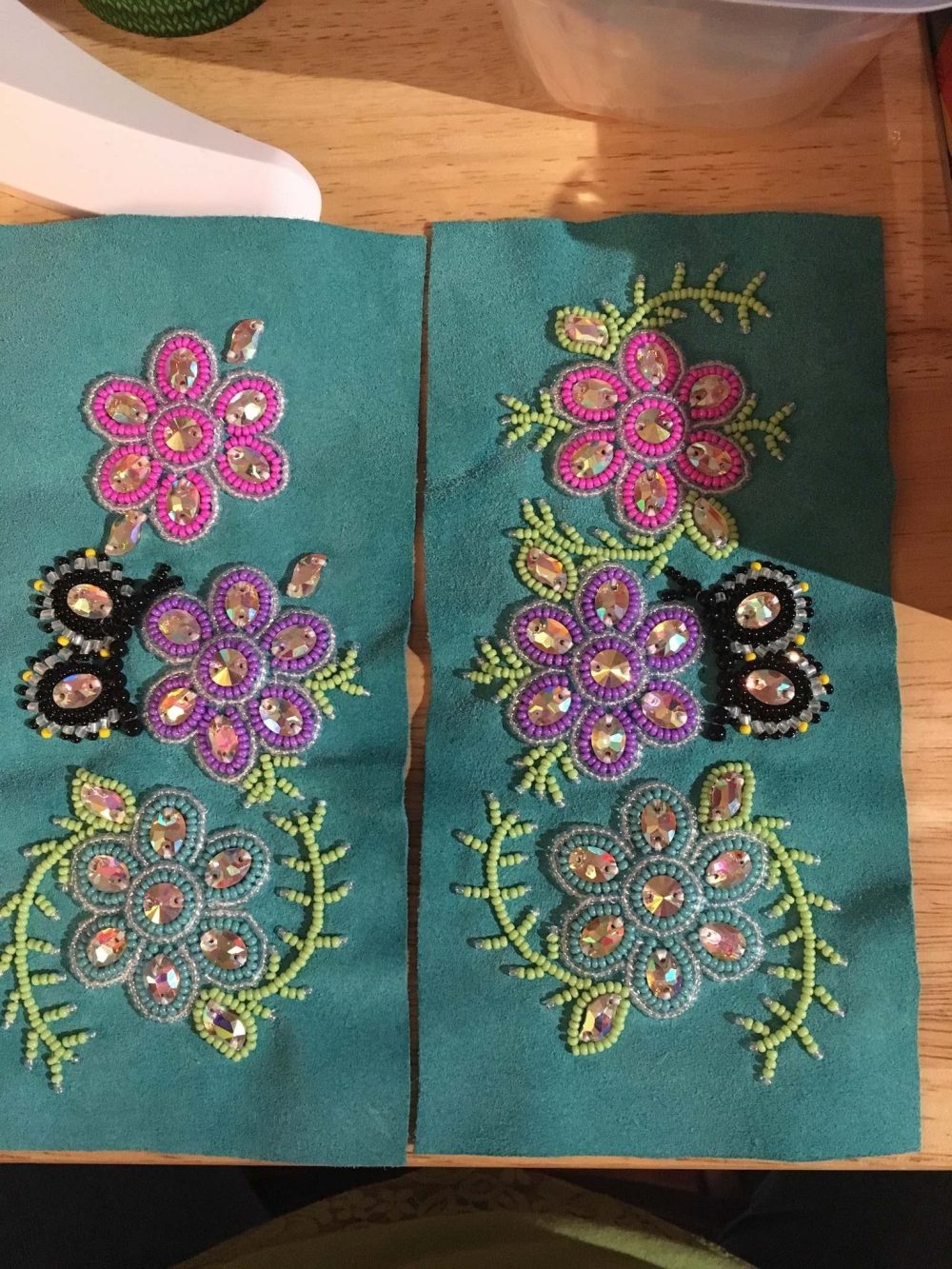Bead generations
Cross-cultural beading group shares art, stories
Advertisement
Read this article for free:
or
Already have an account? Log in here »
To continue reading, please subscribe:
Monthly Digital Subscription
$0 for the first 4 weeks*
- Enjoy unlimited reading on winnipegfreepress.com
- Read the E-Edition, our digital replica newspaper
- Access News Break, our award-winning app
- Play interactive puzzles
*No charge for 4 weeks then price increases to the regular rate of $19.00 plus GST every four weeks. Offer available to new and qualified returning subscribers only. Cancel any time.
Monthly Digital Subscription
$4.75/week*
- Enjoy unlimited reading on winnipegfreepress.com
- Read the E-Edition, our digital replica newspaper
- Access News Break, our award-winning app
- Play interactive puzzles
*Billed as $19 plus GST every four weeks. Cancel any time.
To continue reading, please subscribe:
Add Free Press access to your Brandon Sun subscription for only an additional
$1 for the first 4 weeks*
*Your next subscription payment will increase by $1.00 and you will be charged $16.99 plus GST for four weeks. After four weeks, your payment will increase to $23.99 plus GST every four weeks.
Read unlimited articles for free today:
or
Already have an account? Log in here »
Hey there, time traveller!
This article was published 28/03/2020 (2045 days ago), so information in it may no longer be current.
Recently, I attended MAWA’s cross-cultural beading group.
What a pleasurable experience it was.
MAWA stands for Mentoring Artists for Women’s Art, a community-based visual arts organization.

The group has been meeting every second Monday at 611 Main St. for five years, to share beads, tips and social company, while practising this ancient art. Sometimes there is a guest artist to demonstrate techniques. Coffee, tea and cookies are serve and admission is free.
The atmosphere is informal and suffused with the gentle hum of pleasure that characterizes women’s sewing, quilting and beading circles everywhere. There is something ancient and magical about women gathering together to share a challenging and creative sewing activity.
The evening I attended a few weeks ago, there were two dozen or so beaders, from the ages of 17 to elderly, about half of them Indigenous. All but one were women. Many were longtime participants. Some were there, like me, for the first time. Everyone was encouraged to join in but you could also just watch, as I mostly did.
Some of the women were clearly beading experts, with complex baskets filled with many coloured glass beads, bugles (elongated beads), quills, needles, spools of thread, scissors and pliers, and pieces of felt and leather. Others were newbies, nervous to get started and spending much of the evening sorting piles of beads, or drawing and redrawing floral designs.
The evening’s tutorial was by Jessica Canard, a well-known Winnipeg visual artist, who has ties to Sagkeeng First Nation. She is the creator of exquisite beaded earrings, which can be found for sale in the Winnipeg Art Gallery’s Gift Shop at The Forks.

Canard is also known for her public murals, such as the interactive print mural Creating Communities, created a few years ago for the University of Winnipeg’s business department.
Her tutorial focused on quills, showing how to trim the tips of the quills evenly, how to sew them into bead patterns and how to make patterns using the quills. She made it all seem fun, though it requires a lot of practice and concentration to do well.
We learned how you can harvest quills from a living porcupine: throw a blanket over the porcupine, and wait for her to throw her quills up, which will get stuck in the blanket. Then lift off the blanket, letting the porcupine waddle away.
The walls in the studio were hung with beaded works of art, from moccasins to canvases to headbands. They shone and glittered, encouraging us to up our game.
The room was beautiful in many ways: the studio tables were covered with brightly coloured tablecloths and looked gorgeous with the plates of coloured beads. The women were all so beautiful, in their pleasurable concentration and soft conversation.

Next to me at one of the long tables, Jan was creating a pattern of beads on leather, occasionally interrupting her work to scroll through her iPhone. When I teased her about the distraction, she shared the story of her seven-year-old grandson, who had a kidney transplant a few years ago, and needs constant care. She was waiting for news about him. She’d been a nurse, she said, trained to have some distance from people’s illnesses. But it’s so different when it’s someone in your own family.
I was interested in a group of handsome dark-haired women of different ages sitting together, chatting in low voices, at the end of the tables. Were they related to each other? Yes, they said. They were a mother and two daughters, an aunt and a niece: Michelle, Jasmine and Holly, Heather and Abigail. This was their first time attending the group, though they’d been beading as a family for many years.
Heather, clearly the expert and elder of the group, her needle flying over the beads, said she grew up in a family at a time when many Indigenous people in Winnipeg were trying to downplay their ancestry to get by. At age seven, she met an American Indian family on a family vacation in the U.S. who were open and expressive about their heritage and identity. The mother taught her how to sew and bead moccasins, and she’s been doing it ever since.
Beading gave Heather a way to reconnect with her Indigenousness, and the chance to express herself and share her skills with her family in beautiful ways. She showed me photographs of various sets of beaded mukluks and moccasins she has made over the years for her children and grandchildren and friends, featuring sparkling Swarovski crystal beads. Gorgeous.
Di Brandt was the city’s inaugural poet laureate (2018-19).

dibrandt@shaw.ca

